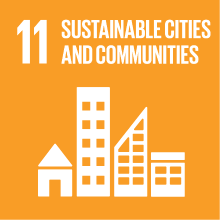ETRUSCOLOGY AND ITALIC ARCHAEOLOGY I
- Academic year
- 2025/2026 Syllabus of previous years
- Official course title
- ETRUSCOLOGIA E ARCHEOLOGIA ITALICA I
- Course code
- FT0074 (AF:586020 AR:325730)
- Teaching language
- Italian
- Modality
- On campus classes
- ECTS credits
- 6
- Degree level
- Bachelor's Degree Programme
- Academic Discipline
- L-ANT/06
- Period
- 3rd Term
- Course year
- 2
Contribution of the course to the overall degree programme goals
The aim of the course is to develop the ability to think about the dynamics of formation and development of the Etruscan civilization and of ancient Italy, also from different points of view. It aims to provide the methodology for the analysis of archaeological contexts also in comparison one with each other.
Expected learning outcomes
- To know basic archaeological and technical terminology
- To Know Italic chronology relative and absolute
- To know main theoretical models to analize settelments and necropolis
- To Know main theoretical models to analize material culture and social organization
2. Ability to apply knowledge and understanding
- To be able to employ archaeological and technical terminology
- To be able to apply chronological references for the Italic Iron age
- To be able to analyze some case studies for settlements and necropolis
- To be able to analyze examples of material culture and artistic finds
3. Judgment skills
- To be able to judge and argue hypothesis about etrusco-italic contexts
4. Communication skills
- To be able to tell new finds or results of the research with a plain and technical terminology
- to be able to compare themselves with colleagues and tutor, even in virtual way
5. Learning ability
- To be able to take notes and to share them with colleagues, even on line
- To be able to consult bibliographic references even with a critical point of view
Pre-requirements
Contents
Themes are proposed for attending and not attending. Non-attending students will have to take into consideration the specifically indicated bibliography and will be able to deepen individual topics of their specific interest on request.
Referral texts
M. Torelli, L’Arte degli Etruschi, Laterza Economica 2008.
M. Torelli, Storia degli Etruschi, Laterza Economica 2005.
Papers for further informations:
Some chapters from V. Bellelli, E. Benelli, Gli Etruschi. La scrittura, la lingua, la società, Carocci editore, 2018; otherwise two papers from G. Bartoloni (a cura di), Introduzione all’Etruscologia, Milano 2011 (Hoepli)G. Bartoloni (a cura di), Introduzione all’Etruscologia, Milano 2011 (Hoepli)
G. Camporeale, Gli Etruschi. Storia e civiltà, UTET, parte seconda, two cities between Veio, Tarquinia, Cerveteri, Vulci
The texts / materials covered and discussed, with any support tools, are provided by the teacher during the course, present in the BAUM library and made available to everyone on the Moodle platform. These texts / materials, collected in a list at the end of the course, are an integral part of the exam program.
Assessment methods
Type of exam
Grading scale
The test is considered good (22-26/30) if the student demonstrates a knowledge of the problems of the cities and artistic manifestations of Etruria and the Italic world, with chronological references, even if generic and broad. Furthermore, he/she must recognise, even without specific connections, more than 30% of the monuments or contexts dealt with and documented in the bibliography.
The test is considered as excellent (27-30/30) if the student demonstrates knowledge of the problems of the cities and artistic manifestations of Etruria and the Italic world, with precise chronological references. Furthermore, he/she must recognise, even without specific connections, more than 70% of the monuments or contexts dealt with and documented in the bibliography.
The test is considered as excellent (30/30 cum laude) if the student demonstrates a thorough knowledge of the topics dealt with, has the competence to connect the topics in a problematic manner, recognises and frames the monuments and contexts dealt with and documented in the bibliography within the socio-cultural issues, demonstrates precision in the chronological framing of the finds and contexts.
Translated with DeepL.com (free version)
Translated with DeepL.com (free version)
Teaching methods
Lectures and exercises
On.line papers for specific topics.
Papers and other useful materials on moodle
2030 Agenda for Sustainable Development Goals
This subject deals with topics related to the macro-area "Cities, infrastructure and social capital" and contributes to the achievement of one or more goals of U. N. Agenda for Sustainable Development


